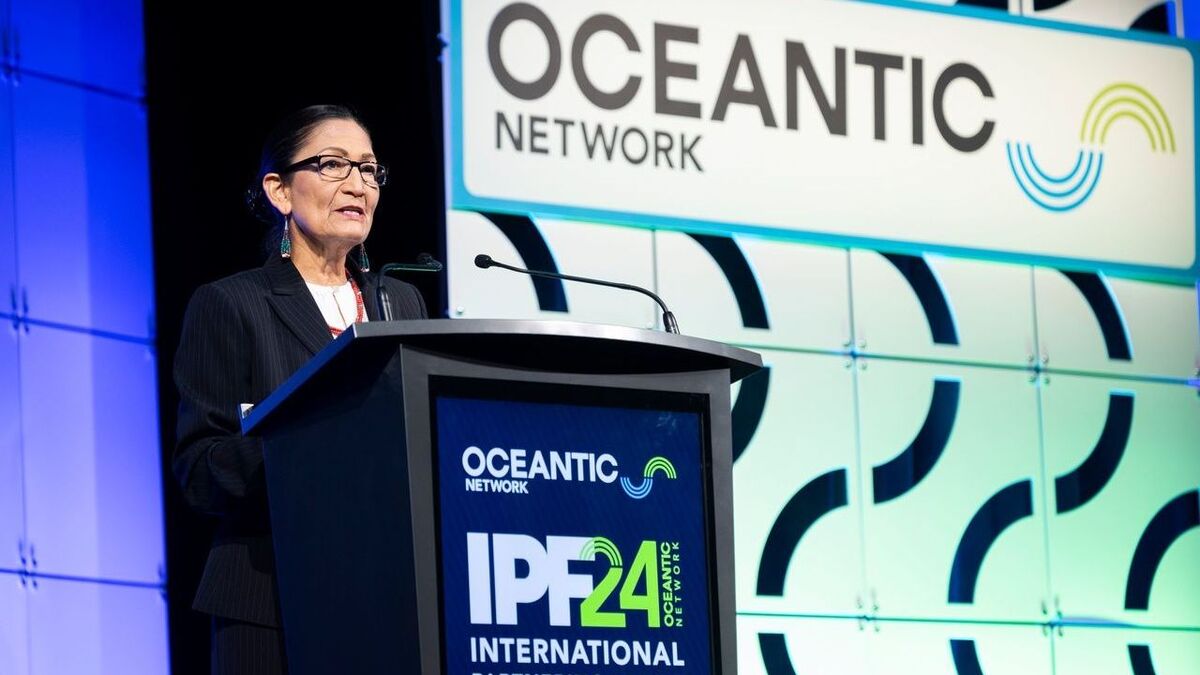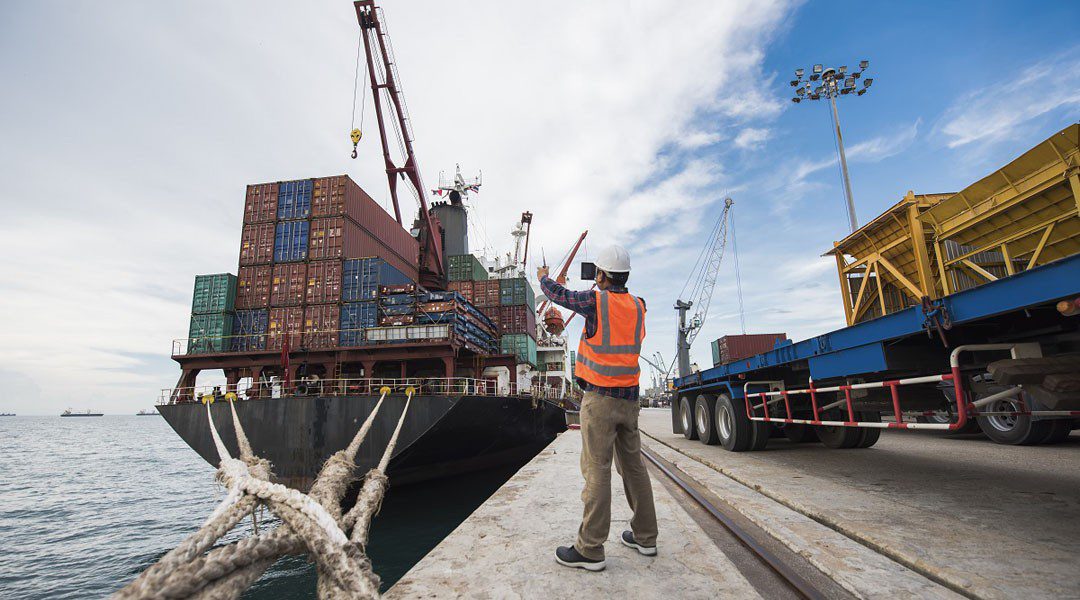 The Secretary of Interior said the five-year leasing schedule “will provide predictability to help developers plan ahead and the confidence needed to continue building the offshore wind supply chain” (source: Oceantic Network)
The Secretary of Interior said the five-year leasing schedule “will provide predictability to help developers plan ahead and the confidence needed to continue building the offshore wind supply chain” (source: Oceantic Network)
US Secretary of the Interior Deb Haaland has unveiled a new five-year offshore wind leasing schedule, which includes up to 12 potential offshore wind energy lease sales through 2028
In remarks at the International Partnering Forum conference in New Orleans on 24 April, the Secretary of the Interior said future offshore wind energy lease sales will take place in the Atlantic, Gulf of Mexico, Pacific and the waters offshore of the US territories in the next five years.
The Secretary of the Interior said the leasing schedule includes four potential offshore lease sales in 2024, one each in 2025 and 2026, two in 2027, and four in 2028.
Since the start of the Biden administration, the Bureau of Ocean Energy Management (BOEM) has approved eight commercial-scale offshore wind projects, held four offshore wind lease auctions – including a record-breaking sale offshore New York – and the first-ever sales offshore the Pacific and Gulf Coasts. It has also advanced the process to establish additional Wind Energy Areas in Oregon, the Gulf of Maine and the Central Atlantic. Thus far, BOEM has approved more than 10 GW of clean energy from offshore wind projects.
“The Biden administration, led by BOEM, has built an offshore wind industry from the ground up after years of delay from the previous administration,” said Secretary Haaland. “As we look toward the future, this new leasing schedule will support the types of renewable energy projects needed to lower consumer costs, combat climate change, create jobs to support families, and ensure economic opportunities are accessible to all communities.
“Our offshore wind leasing schedule will provide predictability to help developers and communities plan ahead and will provide the confidence needed to continue building on the tremendous offshore wind supply chain and manufacturing investments that we’ve already seen.”
BOEM director Liz Klein said, “As the transition to a clean energy economy continues to accelerate, BOEM hopes to provide certainty and transparency by regularly providing a renewable energy leasing schedule.
“Routinely issuing a leasing schedule demonstrates our commitment to a long-term portfolio of leases and provides advance notice to stakeholders of the areas that are being considered for future lease sales, and facilitates planning by Tribes, states, localities, interest groups, academia, non-profits, fisheries, federal agencies, and other stakeholders.”
In 2021, Secretary Haaland announced an offshore wind leasing schedule through 2025. The new offshore wind energy leasing plan includes the following sales over the next five years. In 2024, lease sales will take place in the Central Atlantic, Gulf of Maine, Gulf of Mexico, and Oregon; in 2025, there will be lease sales in the Gulf of Mexico. In 2026 a lease sale will take place in the Central Atlantic; and in 2027 in the Gulf of Mexico and New York Bight. The final lease sale in the five-year plan will take place in 2028 California, a US Territory, Gulf of Maine and Hawaii,
Responding, the American Clean Power Association said, “Today’s announcements are a significant step forward for the advancement of the offshore wind energy industry. The new leasing schedule announced by BOEM helps provide the needed business certainty for future planning, especially as we build out a domestic supply chain.”
Secretary Haaland also announced that BOEM and the Bureau of Safety and Environmental Enforcement (BSEE) have finalised updated regulations for renewable energy development on the Outer Continental Shelf.
The final rule increases certainty and reduces the costs associated with the deployment of offshore wind projects by modernising regulations, streamlining overly complex processes and removing unnecessary ones, clarifying ambiguous regulatory provisions, and enhancing compliance requirements. BOEM and BSEE have complementary obligations in implementing the offshore wind programme.
Over the next 20 years, the final rule is expected to result in cost savings of roughly US$1.9Bn to the offshore wind industry, savings that can be passed on to consumers and used to invest in additional job-creating clean energy projects.
“By modernising and updating these regulations, we are paving the way for the safe and efficient deployment of offshore wind projects, providing clarity for developers while continuing to protect important natural and cultural resources,” said Secretary Haaland.





